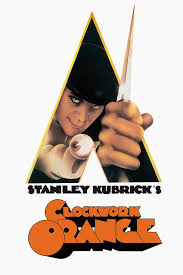
Bill Gold – Casablanca & Clockwork Orange
Share
Bill Gold – Designed Posters for Casablanca and A Clockwork Orange - Poster Artist
Bill Gold was an American graphic designer and art director, renowned for his iconic film posters that have become enduring symbols of cinematic history. Over a career that spanned more than six decades, Gold created over 2,000 movie posters, including some of the most iconic images in film history. His work on Casablanca (1942) and A Clockwork Orange (1971) is particularly celebrated for capturing the essence of these films through powerful visual storytelling.
Early Career and Background
Background: Born in Brooklyn, New York, in 1921, Bill Gold started his career as an assistant at Warner Bros. He was later recruited by art director Ted Haworth, under whom he learned the art of film poster design. Gold’s early work was marked by a deep understanding of typography and visual composition, which laid the foundation for his later success.
Artistic Style
Gold’s posters are characterized by their clarity, simplicity, and bold use of color. His designs often featured strong typography and a central visual element that captured the essence of the film. Gold’s style was both commercial and artistic, making him one of the most sought-after designers in Hollywood. He was known for his ability to convey complex narratives through minimalistic visuals, a trait that became his signature.
Casablanca (1942)
- Design Concept: For Casablanca, Bill Gold created one of the most iconic film posters in history. The design prominently features Humphrey Bogart and Ingrid Bergman, the film’s main stars, framed in a tender, yet dramatic embrace. The use of deep hues like red, yellow, and green creates a sense of romance and nostalgia, evoking the classic Hollywood glamour that defines Casablanca. The composition and color palette effectively reflect the film’s themes of love, war, and sacrifice.
- Impact and Reception: The Casablanca poster became an instant classic, not only for its visual appeal but also for its ability to capture the spirit of the film’s narrative. It has been referenced in countless discussions and publications about classic film posters and is often used as an example of how a great design can elevate a movie’s status. Gold’s design has been celebrated for decades, including in retrospectives such as The Hollywood Reporter.
Sources and References:
- "Bill Gold: Poster Man" by Ruth Polsky
- Image of Casablanca poster
- The Hollywood Reporter article on Bill Gold’s posters
A Clockwork Orange (1971)
- Design Concept: For A Clockwork Orange, Stanley Kubrick tasked Bill Gold with creating a poster that would capture the film’s dark, dystopian themes. Gold’s design features a menacing image of Malcolm McDowell as Alex DeLarge, the anti-hero of the film. The use of black, white, and red color scheme creates a striking visual that conveys both the film’s violence and sense of rebellion. The central image, along with the bold typography, emphasizes the film’s provocative nature.
- Visual Symbolism: The use of minimal colors and a central figure effectively encapsulates the psychological and social commentary of A Clockwork Orange. Gold’s design speaks to the film’s exploration of control, violence, and individuality, making it one of the most memorable posters in film history. The visual impact of the poster is often discussed in film studies, such as in Screen Rant.
- Impact and Reception: Like the Casablanca poster, Gold’s design for A Clockwork Orange became iconic, representing the film’s controversial nature and thematic depth. The poster’s visual simplicity and stark imagery have been credited with capturing the film’s essence in a powerful and direct manner. It continues to be referenced in discussions about film marketing and poster design. The poster is celebrated for its ability to communicate complex ideas through minimal visual elements, making it a key piece in the study of film poster art.
- "Stanley Kubrick: A Biography" by Alison Castle and Geoffrey Cocks
- Image of A Clockwork Orange poster
- Screen Rant article on A Clockwork Orange poster design
Enduring Impact
Bill Gold’s work has had a profound impact on film marketing and graphic design. His posters for Casablanca and A Clockwork Orange are not just visually striking; they have become cultural icons that encapsulate the essence of their respective films. Gold’s ability to distill complex narratives into a single, compelling image set a standard for film poster art, influencing a generation of designers and filmmakers.
Collections and Exhibitions
Many of Gold’s posters are part of prestigious collections, including those at the Museum of Modern Art and The Academy of Motion Picture Arts and Sciences. His work has been featured in retrospectives such as The Hollywood Reporter and Empire Magazine. The Bill Gold Poster Gallery in Connecticut celebrates his career and preserves his legacy for future generations.
Books and Articles:
- "Bill Gold: Poster Man" by Ruth Polsky
- Empire Magazine article on A Clockwork Orange poster
- The Hollywood Reporter article on Bill Gold’s posters
Conclusion
Bill Gold’s contributions to film poster art, particularly through Casablanca and A Clockwork Orange, have established him as one of the foremost figures in the field. His ability to create iconic, memorable posters that capture the essence of a film has left an enduring legacy. Gold’s work continues to be celebrated for its artistic merit and its influence on the evolution of film marketing.




